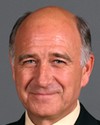Thank you, Madam Chair.
Welcome to everyone this morning.
Ms. Beckton, we've had a number of witnesses come to these sessions who've talked about these equality indicators. Some feel, and I guess I'm one of them, a certain level of frustration--and you've probably read about that. It's just that we seem to have this model set up, but the outcomes do not seem to be achieving what we believe the desired ends should be. Many of the witnesses have said the same thing. What they were saying is that they would like to see the equality indicators much better integrated into the gender budget approach.
I have a couple of questions for you.
First, what are the indicators you are using at present? I think you mentioned those before. You also mentioned to Ms. Mathyssen, I believe it was, looking at new things such as employment, democratic participation, and things like that.
Secondly, has there been any discussion within your department about the indicators identified at the United Nations session in 2003? Those included things like affordable housing, civil legal aid, affordable and regulated child care, education and training, employment insurance, and shelters and transition houses for women experiencing violence. When you talked about where you were thinking of going, you didn't really mention any of those.
I wonder if you could answer those two things for me and give me some light at the end of the tunnel.





